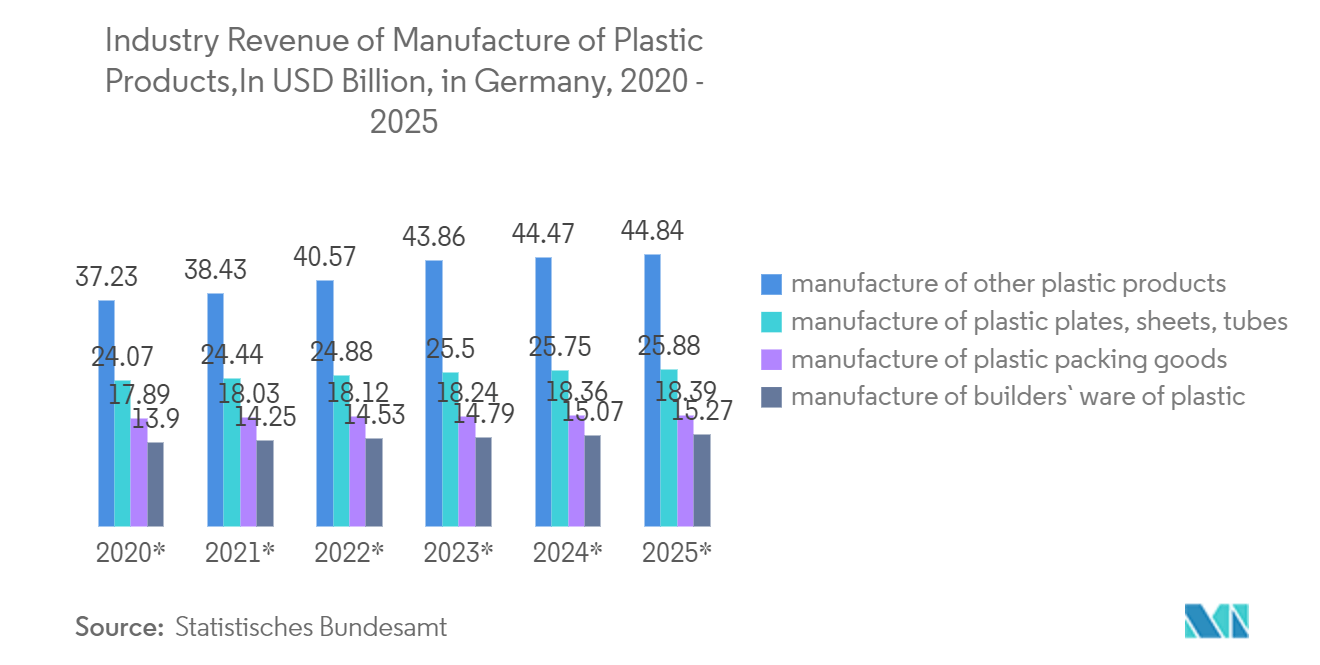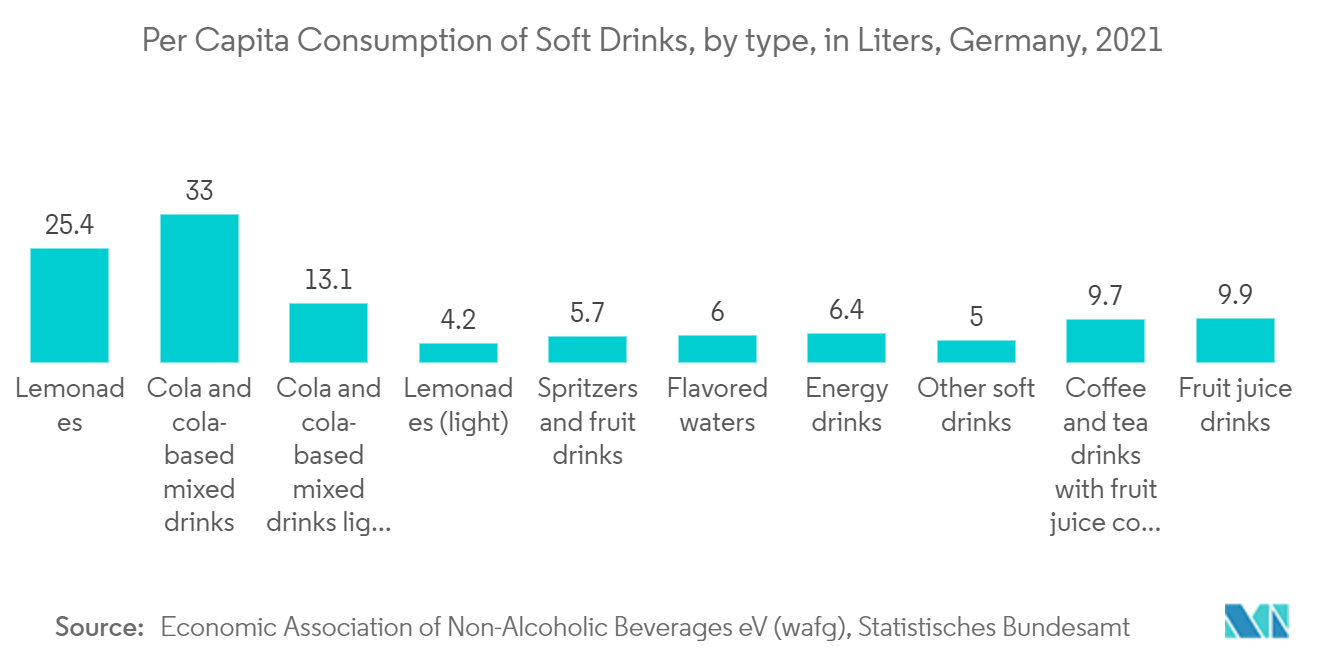Market Trends of Germany Plastic Packaging Industry
This section covers the major market trends shaping the Germany Plastic Packaging Market according to our research experts:
Increased Eco-Friendly Packaging and Recycled Plastic Driving the Market
- Recent years have brought several changes and more stringent regulations for the plastics packaging industry in Germany. The German Packaging Law and its quotas mainly affect packaging manufacturers that carry packs into circulation, and they now must register with a centralized authority. Paragraph 21 of the law also requires packaging design for recycling, recyclability, and using recyclates and renewable materials. The government aimed to recycle 63% of plastic packaging last year, up from 40% in 2018.
- Under an EU directive, half of all plastic packaging in the EU should be recycled by 2025. It shall rise to 55% by 2030. The German plastic packaging industry is going a step further and set itself the target of making 90% of household plastic packaging recyclable or reusable by 2025. Focused recycling can produce high-quality secondary raw materials for new packaging.
- It compelled market vendors to produce circular solutions along with innovations. In March last year, AlplaGroup announced that it would increase its annual recycling volume in Germany to 75,000 tons of PET bottles. It is after agreeing to acquire recycling company Texplastfrom the FROMM Group and all of its shares in the joint venture PET Recycling Team Wolfen. PET recyclate is in hot demand as European brands prepare for increasingly stringent circular economy regulations. The EU's Single-Use Plastics Directive imposes a 90% collection rate for plastic beverage bottles by 2029 and a minimum of 25% recycled plastic in PET bottles from 2025, rising to 30% from 2030 in all beverage bottles.
- In February last year, Coca-Cola Germany replaced the cap on its single-use PET bottles to improve recycling. Consumers across the EU would soon see new closures that stay securely connected to the bottle after it opens. Coca-Cola in Germany is one of the early adopters of the EU's 2024 recyclability deadline. Across Europe, a transition is underway to reduce trash and enhance recycling collection rates. Coca-Cola is also using the move to the new caps to lower the material amount used in the bottles overall in Germany. The improved closures could save up to 1.37 grams of plastic per bottle. It, in turn, helps Coca-Cola's sustainability initiatives in Germany.
- Further, the revenue generated by plastic products is increasing yearly. According to Statistisches Bundesamt, the projected revenue of the manufacture of plastic products in Germany would amount to approximately USD 104.38 billion by 2025.

Bevarages is Expected to Hold Major Market Share
- Beverages, including fruit juices, alcoholic drinks, and meal replacement shakes, are increasingly embracing flexible plastic packaging solutions. There is an increasing demand for stand-up and spouted pouches for various beverage packaging.
- However, the beverage quality is affected by pH, storage temperature, pressure, and the presence of contaminants. Changes in the levels can alter beverage consumption. Companies are increasingly employing flexible packaging products with properties such as high barrier resistance (heat, moisture, and bacteria) to eliminate possible oxidation.
- The rapidly adopted trend of lightweight packaging material, alongside the inclination towards reducing production, shipment, and handling costs, is driving the flexible plastic packaging of beverages. Furthermore, the demand is driven by the rise of e-commerce focusing on visually appealing packaging trends.
- Further, in May 2021, most parliamentarians in Germany's Bundestag approved changes to the German Packaging Law. It comprised an extension of the mandatory deposit to include PET juice bottles that came into force as of January last year. Such initiatives would promote a circular economy.
- Moreover, the region also witnessed a steady growth in the demand for carbonated soft drinks and mineral water over the years. For instance, according to Statistisches Bundesamt, in 2020 and 2021, the German beverage industry (comprising beer, distilled spirits, wine, sparkling wine, non-alcoholic soft drinks, and mineral water) generated revenues of approximately EUR 21.29 billion (USD 23.20 billion) and EUR 21.2 billion (USD 23.10 billion), respectively. PET bottles provide an advantage over other packaging as they are available in larger sizes from 200 ml, making them versatile.


